The Louisiana School for the Deaf is a state school for deaf and hard-of-hearing students in Louisiana, located in Baton Rouge, the state capital. It was established in 1852 as a joint school for blind students. In 1860, its first purpose-built facility was completed and admired as an elegant monument to philanthropy. The schools were divided in 1898, and in 1908, Louisiana School for the Deaf was renamed.
NextSense, formerly the Royal Institute for Deaf & Blind Children, in Sydney provides a range of educational services for students with vision and/or hearing impairment, including specialist schools for signing Deaf students, oral deaf students, and students with sensory and intellectual disabilities.
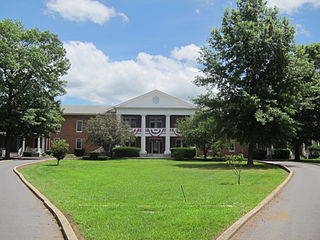
The West Virginia Schools for the Deaf and the Blind (WVSDB) were established by an Act of the Legislature on March 3, 1870. The School for the Deaf and the School for the Blind offer comprehensive educational programs for hearing impaired and visually impaired students respectively. There is also a unit for deafblind and multihandicapped children. Students are eligible to enroll at the age of three, must be residents of the state of West Virginia and exhibit a hearing or visual loss sufficient to prevent normal progress in the usual public school setting. The West Virginia Schools for the Deaf and Blind are located on a campus in Romney in West Virginia's Eastern Panhandle. Locally, the schools are referred to simply as The state school.
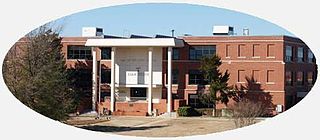
Oklahoma School for the Deaf (OSD) is a public residential school for the deaf and hard of hearing students ages 2 through 18. The school teaches K-12 students in Sulphur, Oklahoma, United States.

Indiana School for the Deaf (ISD) is a fully accredited school for the deaf and hard of hearing, located in Indianapolis, Indiana.
The South Dakota School for the Blind and Visually Impaired (SDSBVI) is a state-supported school located in Aberdeen, South Dakota, which provides services to meet the educational needs of children who are blind, visually impaired, or deaf-blind from birth through the age of 21. SDSBVI has been governed by the South Dakota Board of Regents since 1945.
The South Dakota Services for the Deaf (SDSD) is a state agency that supports deaf children in South Dakota. Formerly it was a state-supported school located in Sioux Falls, South Dakota that provided services to meet the educational needs of children who are deaf, hard-of-hearing, or have cochlear implants. SDSD is governed by the South Dakota Board of Regents.

The California School for the Blind is a public educational institution for blind children, K-12, located in Fremont, California. Its campus is located next to the California School for the Deaf.
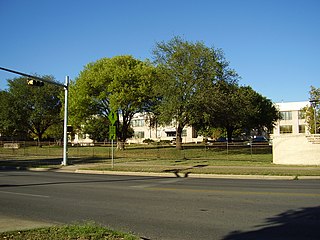
The Texas School for the Blind and Visually Impaired (TSBVI) is a Texas special public school, in the continuum of statewide placements for students who have a visual impairment. It is considered a statewide resource to parents of these children and professionals who serve them. Students, ages 6 through 21, who are blind, deafblind, or visually impaired, including those with additional disabilities, are eligible for consideration for services at TSBVI.

The Virginia School for the Deaf and the Blind, located in Staunton, Virginia, United States, is an institution for educating deaf and blind children, first established in 1839 by an act of the Virginia General Assembly. The school accepts children aged between 2 and 22 and provides residential accommodation for those students aged 5 and over who live outside a 35-mile (56 km) radius of the school
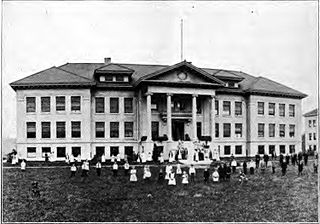
Oregon School for the Deaf (OSD) is a state-funded school in Salem, Oregon, United States. It serves deaf and hard of hearing students from kindergarten through high school, and up to 18 years of age.

The Minnesota State Academy for the Deaf (MSAD) is a public residential school serving deaf children in Minnesota, United States. It is one of two Minnesota State Academies in Faribault and operated by the state for particular student populations.

Deaf education is the education of students with any degree of hearing loss or deafness. This may involve, but does not always, individually-planned, systematically-monitored teaching methods, adaptive materials, accessible settings, and other interventions designed to help students achieve a higher level of self-sufficiency and success in the school and community than they would achieve with a typical classroom education. There are different language modalities used in educational setting where students get varied communication methods. A number of countries focus on training teachers to teach deaf students with a variety of approaches and have organizations to aid deaf students.
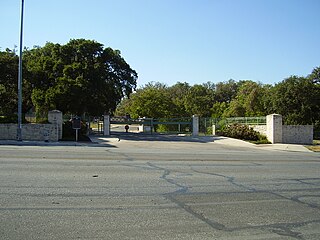
Texas School for the Deaf (TSD) is a state-operated primary and secondary school for deaf children in Austin, Texas. Opened in 1857 "in an old frame house, three log cabins, and a smokehouse", it is the oldest continually-operated public school in Texas. The school struggled under inadequate funding during the American Civil War, and its aftermath, with the students eating food that they grew themselves on the school farm. In 1951 the State Board of Education assumed oversight of the school.

Indiana School for the Blind and Visually Impaired, or ISBVI, established in 1847 as the Indiana School for the Blind and also known as the Indiana Institution for the Education of the Blind, is a residential school for Indiana youth that are blind or have low vision in Indianapolis, USA. The school was founded in 1847.

The New Mexico School for the Blind and Visually Impaired is a state special education school with a residential campus in Alamogordo, New Mexico and a preschool in Albuquerque, New Mexico. It operates outreach programs throughout the state.
The Arizona State Schools for the Deaf and the Blind(ASDB) is an Arizona state agency, with its administrative headquarters in Tucson. It operates three schools for the deaf and blind, and five regional cooperatives throughout the state:

The Arkansas School for the Blind and Visually Impaired, is a state-run public school in Little Rock, Arkansas, United States, serving blind and vision impaired students of kindergarten through high school grades through residential, day school, and part-time enrollment programs.
The Council of Schools and Services for the Blind (COSB) is a consortium of specialized schools in Canada and the United States whose major goal is improving the quality of services to children who are blind and visually impaired.
Texas Blind, Deaf, and Orphan School was a school for blind and deaf black people in Austin, Texas. Throughout its history, due to educational segregation in the United States, the school served only black students and had black teachers; whites attended the Texas School for the Deaf (TSD) and the Texas School for the Blind and Visually Impaired (TSBVI).














